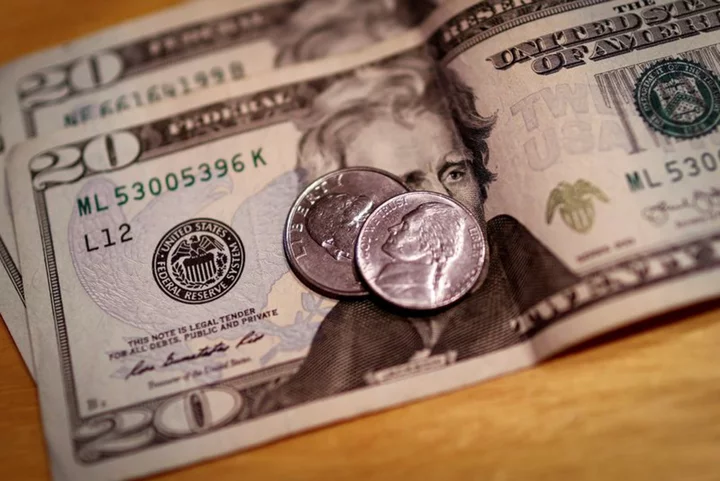By Dan Burns
U.S. household wealth climbed to the highest in a year in the first three months of 2023, led by the stock market's recovery from last year's bear market and mushrooming appetite for high-yielding U.S. government bonds, data from the Federal Reserve on Thursday showed.
Household net worth rose by more than $3 trillion in the first quarter to $148.8 trillion, with holdings of equities increasing by about $2.4 trillion, more than offsetting a $600 billion decline in real estate values, the Fed said.
Perhaps most notably, the resurgence in wealth was also aided by a record increase in the value of households' holdings of debt securities - with a nearly $550 billion increase in Treasuries leading the way.
Even with the rise, households are still down by nearly $4 trillion from the record wealth level of $152.6 trillion recorded in the first quarter of 2022.
The quarterly snapshot of the nation's financial condition covering the business, household and government sectors also showed what had been a key source of U.S. household resilience through the COVID-19 pandemic - cash near at hand - crested in early 2022 and has declined by more than $500 billion since then.
The sum of household bank deposits and money market mutual fund holdings declined by about $115 billion to $17.76 trillion, the lowest since the third quarter of 2021.
Within that, the largest chunk - savings and time deposits - dropped by $420 billion to below $10 trillion for the first time since early 2020, before they would become bulked up by government pandemic relief programs over the ensuing two years. Since cresting in the first quarter of 2022, savings and time deposit balances have tumbled by more than $1.2 trillion.
Some of that drop represented a shift from bank deposits to money market accounts offering higher interest rates after a year of aggressive Fed rate hikes. Deposits were also pressured after the failure of Silicon Valley Bank late in the first quarter sparked a brief outflow of deposits from across the banking system.
Indeed, money market balances rose by $300 billion in the quarter to a record high $3.37 trillion. Checking account balances edged up, supported by a strong job market.
Interest rate dynamics also likely fueled the surge in household holdings of debt, with newly issued U.S. Treasury bills, notes and bonds over the last several quarters sporting substantially higher interest rates than those offered on bank accounts and certificates of deposit.
BOND BUYERS
Since the end of the 2021, just before the Fed embarked on its pitched fight against inflation that led to 5 percentage points of rate hikes in just over a year's time, direct holdings of debt securities have surged by 75% and those of Treasuries themselves have nearly quadrupled. The Bloomberg Treasury Index delivered a 3% total return in the first quarter, the strongest in three years.
The shift from bank deposits to money market accounts and bonds could persist.
"We know from the weekly banking data that the outflow of deposits has since stabilized, but the higher interest rates available on Treasury bills and money market accounts will still incentivize a gradual shift out of banking deposits over the coming year," Oxford Economics Lead U.S. Economist Michael Pearce wrote in a note.
Stocks, though, were the big driver behind a second straight quarterly improvement in household wealth.
After tumbling by roughly 25% in the first three quarters of 2022, the benchmark S&P 500 Index has since rebounded by about 20%, including a 7% gain in the first quarter.
Real estate values, meanwhile, slid for a third straight quarter to about $41.2 trillion. The housing market has been the sector most visibly affected by Fed rate hikes, and the pace of home sales tumbled last year while price growth had stalled out by the start of this year.
(Reporting by Dan Burns; Editing by Marguerita Choy and Andrea Ricci)









